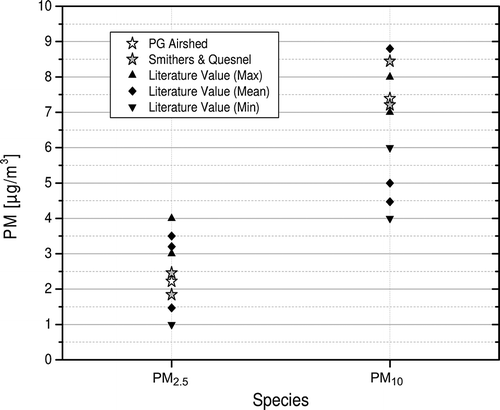Figures & data
Figure 1. Locations of the PM measurement stations analyzed in this study. Map (a) provides a rough overview of the overall study domain on the North American continent, map (b) illustrates the locations of all small cities in central British Columbia included in this study, and map (c) shows the specific location of the Plaza and Gladstone measurement stations in Prince George.
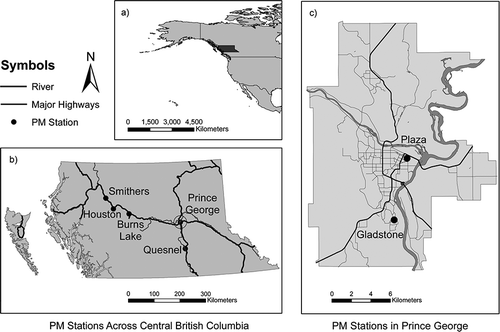
Figure 2. Low pollution sectors for the PG Plaza monitoring location identified by the geographical analysis. Light shading identifies forested areas. Hatching, cross hatching and stippling (with road network) indicate commercial, industrial, and residential areas, respectively. Major rivers are shown in white.
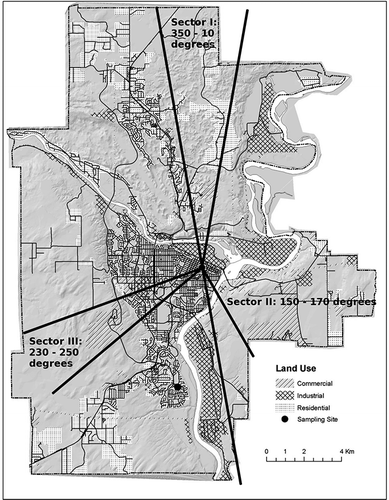
Figure 3. Analysis of low pollution sectors for Plaza. Rings indicate wind speed (m/s); shading is mean PM10 concentration (µg/m3).
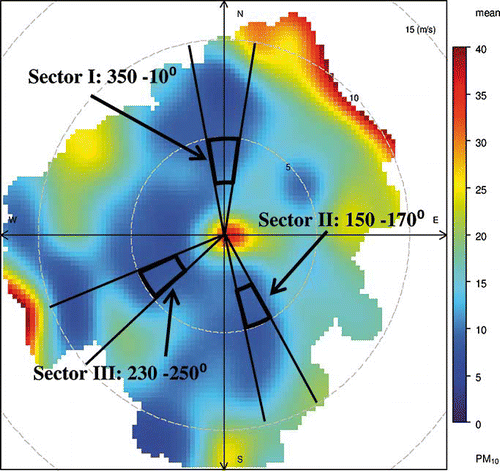
Figure 4. Low pollution sectors for the PG Gladstone monitoring location. For explanation of shadings, see .
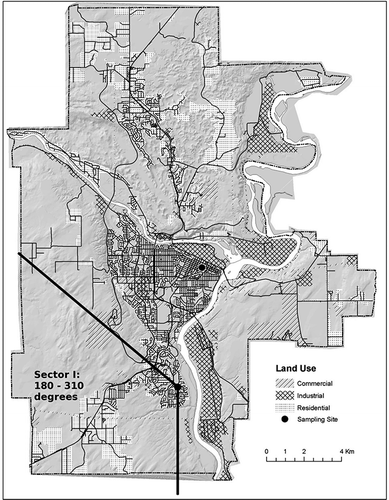
Figure 5. Analysis of low pollution sectors for Gladstone. Rings indicate wind speed (m/s); shading is mean PM10 concentration (µg/m3).
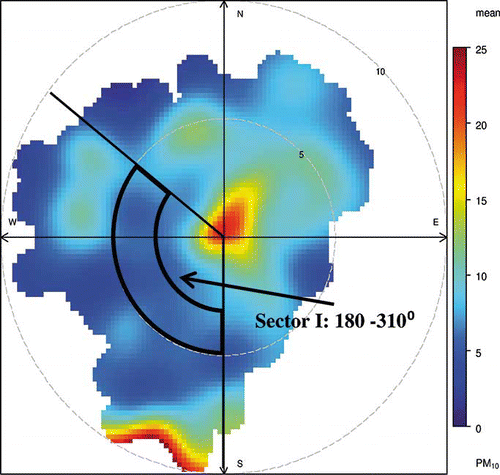
Table 1. Annual and seasonal PM10 and PM2.5 background concentrations with 95% confidence intervals for the PG airshed based on Plaza 2000–2009 and Gladstone 2006–2009 data
Figure 6. Seasonal variability of PM10 background concentrations for the PG airshed based on both Plaza (2000–2009) and Gladstone (2006–2009) monitoring data. See text for explanation of dry and wet conditions. Error bars represent 95% confidence intervals.
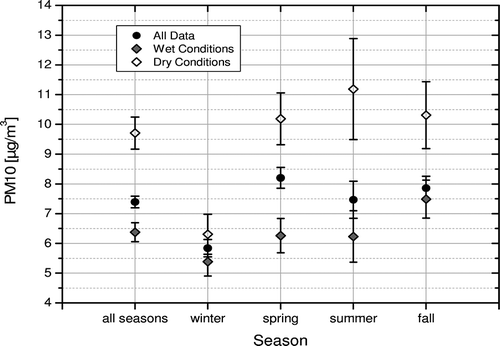
Figure 7. Seasonal variability of PM2.5 background concentrations for the PG airshed based on both Plaza (2000–2009) and Gladstone (2006–2009) monitoring data. See text for explanation of dry and wet conditions. Error bars represent 95% confidence intervals.
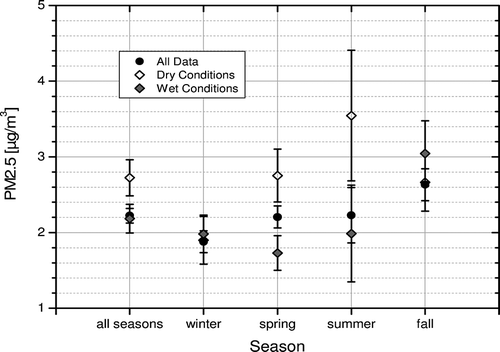
Table 2. Low pollution sectors and wind conditions for the six northern BC locations analyzed in this study
Table 3. PM10 background concentrations with 95% confidence intervals and related percentiles for all BC locations analyzed
Table 4. PM2.5 background concentrations with 95% confidence intervals and related percentiles for all BC locations analyzed
Figure 9. PM10 background PG airshed (mean of Plaza and Gladstone values) versus Smithers and Quesnel: 25th, 50th, and 75th percentiles of hourly means.
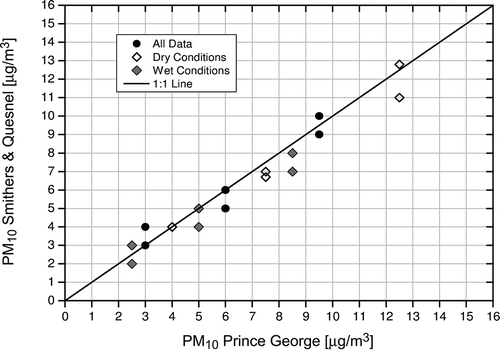
Figure 10. PM2.5 background PG airshed (mean of Plaza and Gladstone values) versus Smithers and Quesnel: 50th and 75th percentiles of hourly means.
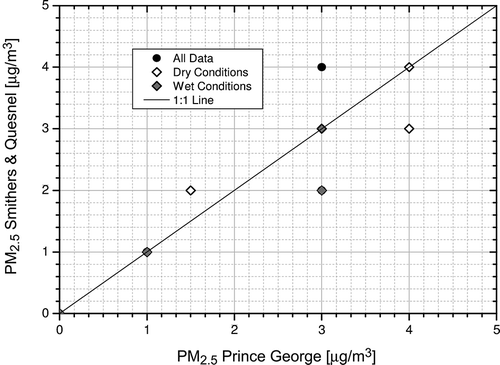
Figure 11. Annual PM (wet)/PM (dry) ratios for PM2.5 (left) and PM10 (right) for Prince George Plaza, Prince George Gladstone, Smithers, and Quesnel.
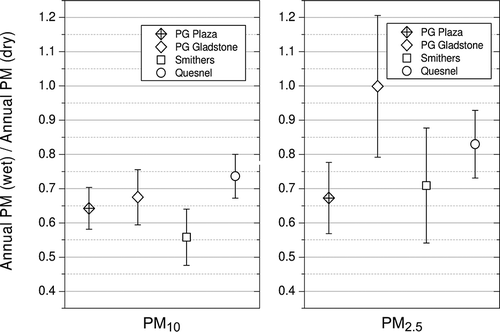
Table 5. Detailed sector analysis for annual PM background concentrations at PG Plaza
Table 6. Summary of background PM concentration values investigated by different authors
Figure 12. Comparison of annual and seasonal mean PM10 background concentrations observed at Plaza 2000–2009 and Gladstone 2006–2009. Error bars show 95% confidence intervals.
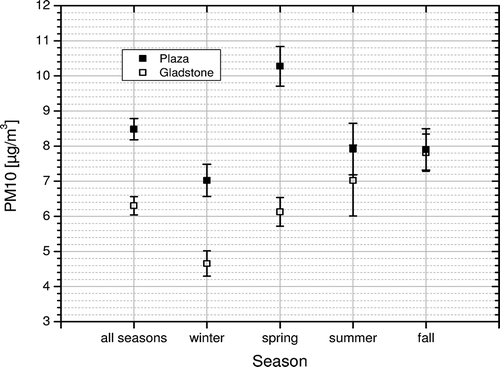
Figure 13. Comparison of annual and seasonal mean PM2.5 background concentrations observed at Plaza 2000–2009 and Gladstone 2006–2009. Error bars show 95% confidence intervals.
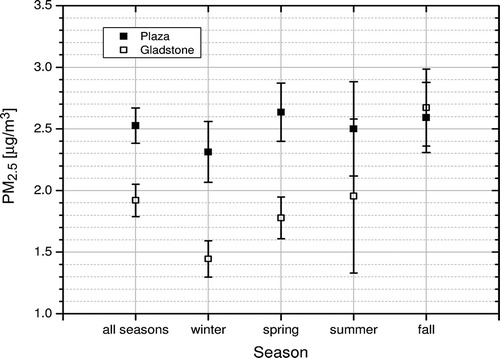
Figure 14. Comparison of the PG airshed annual PM10 and PM2.5 concentrations (blank stars) to Smithers and Quesnel (shaded stars) as well as literature values. Diamonds indicate mean annual background values; triangles indicate minimum and maximum background levels investigated by former authors; see also .
